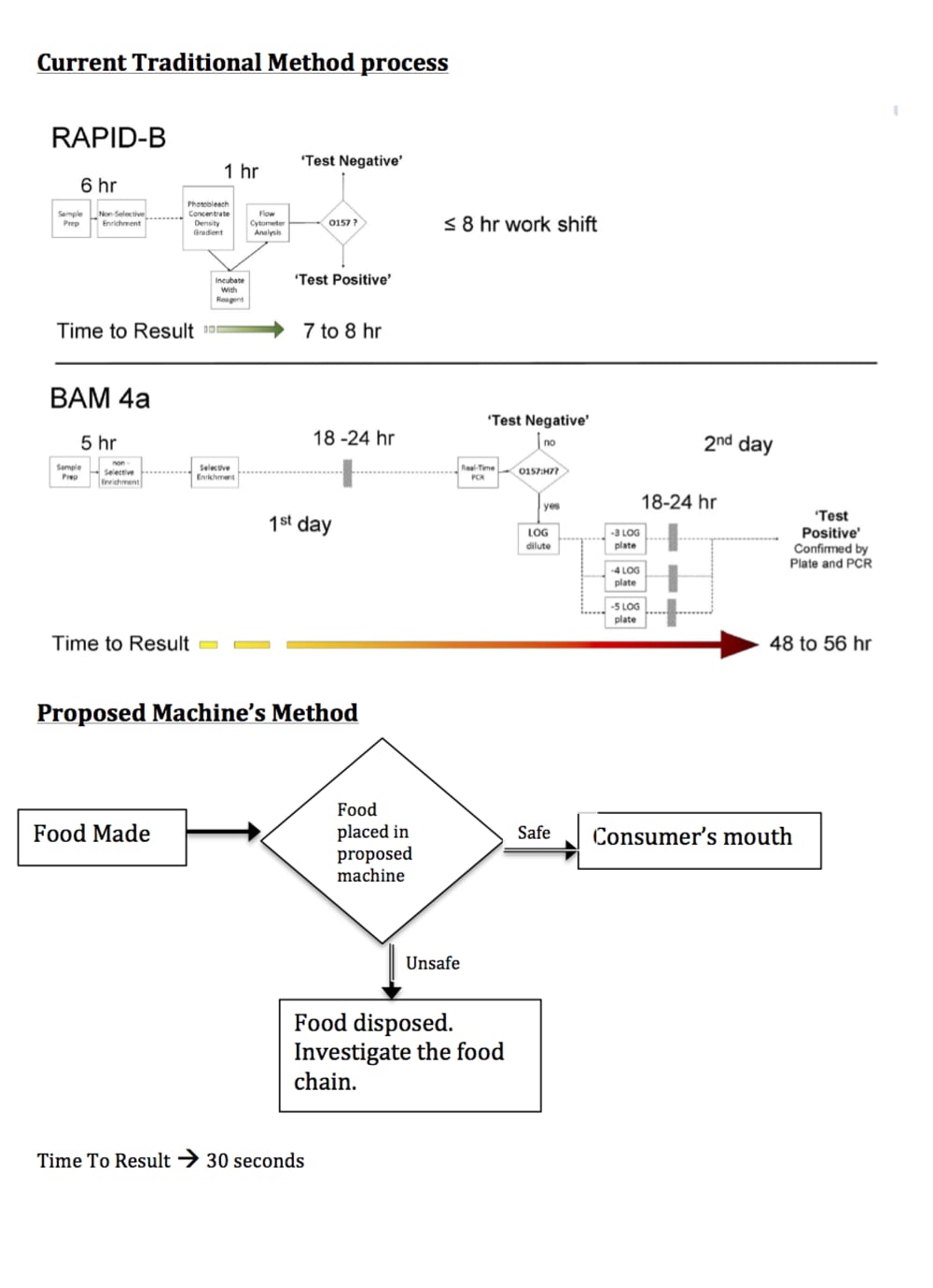There are three problems related to food safety and pathogens. The first problem is that 80% of food borne illness and 56% hospitalisations and death in U.S. have occurred due to an unknown pathogen. The second problem is the detection method (RAPID-B and BAM 4a) currently been used is extremely slow. The BAM 4a’s time to final result is 48 to 56 hour. The third problem is climate change and global warming. Weather phenomenon such as rainfall, wind and sun are critical factors in food production. Any undesirable alterations to these result in growth of pathogens.
The machine that I am trying to build would detect food pathogens at the last stage i.e. just the stage before it reaches the consumer’s mouth. The machine would have a special feature to examine the food at the last stage of production and return Boolean values: “safe” or “not safe” in its digital screen. The idea is that for instance if one goes to Chipotle, the end wrapped burrito would be put inside the machine and within 30 seconds it would examine if it is safe to consume or not. Hence, it would completely eliminate the chances of falling sick due to eating outside.
Currently, there are three areas of research before building the machine. The first is to research the accuracy of the traditional methods, BAM 4a and RAPID-B so that a benchmark for the machine’s result can be set. However, the traditional methodology of investigation cannot be used for the proposed machine because of the enrichment stage. This problem of enrichment will be tackled by the second research area where chips invented at Columbia Engineering would be used. These chips could detect bacteria by listening to its interactions with the environment. However, the problem is that the chip would detect any bacteria and not pathogen specifically. This would lead into third research area in the fields of nano materials where the capability of different chips already developed to identify different food pathogens will be combined. The ultimate goal is to develop a microchip that is capable of detecting pathogens. Then this microchip shall act as an actuator and interact with a controller to return the Boolean values – “safe” and “unsafe” in the digital screen of the machine.
The primary benefit of the research is healthy lives. If in United States, food borne illness is decreased by merely 10%, then 5 million U.S. citizens can be prevented from becoming ill. The machine would also reduce the probability of losses due to a disease outbreak for a restaurant chain. Chipotle’s share went down consistently in just few days after the E-coli outbreak in 2016. This shows how badly food borne disease can affect a company’s sales. This not only increases the importance of the machine proposed but also highlights the marketing facts for the machine. If such a machine were developed, every eatery store would be bound to buy this machine as consumers would want the safe assurance before eating outside food.
Like this entry?
-
About the Entrant
- Name:Kreteeka Chaudhury
- Type of entry:individual
- Patent status:none

